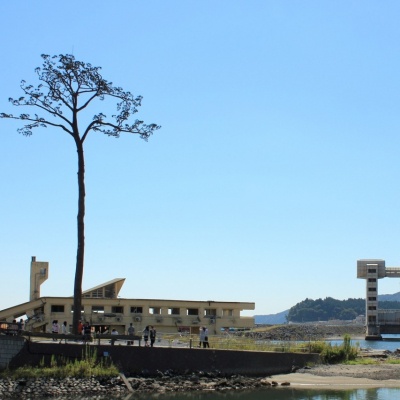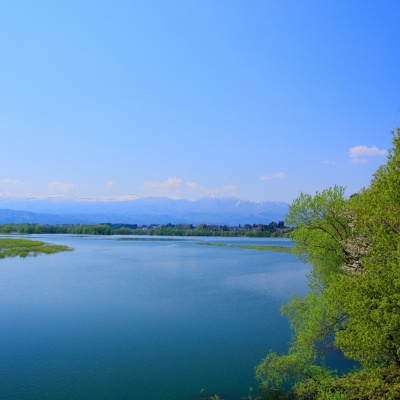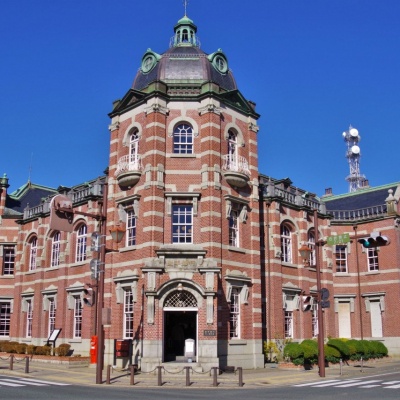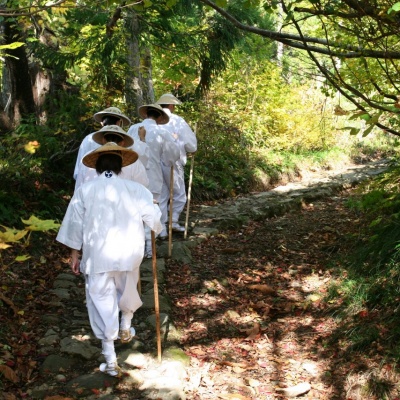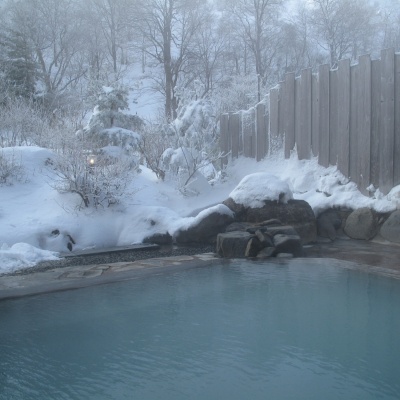Tohoku Samurai Culture and Castles
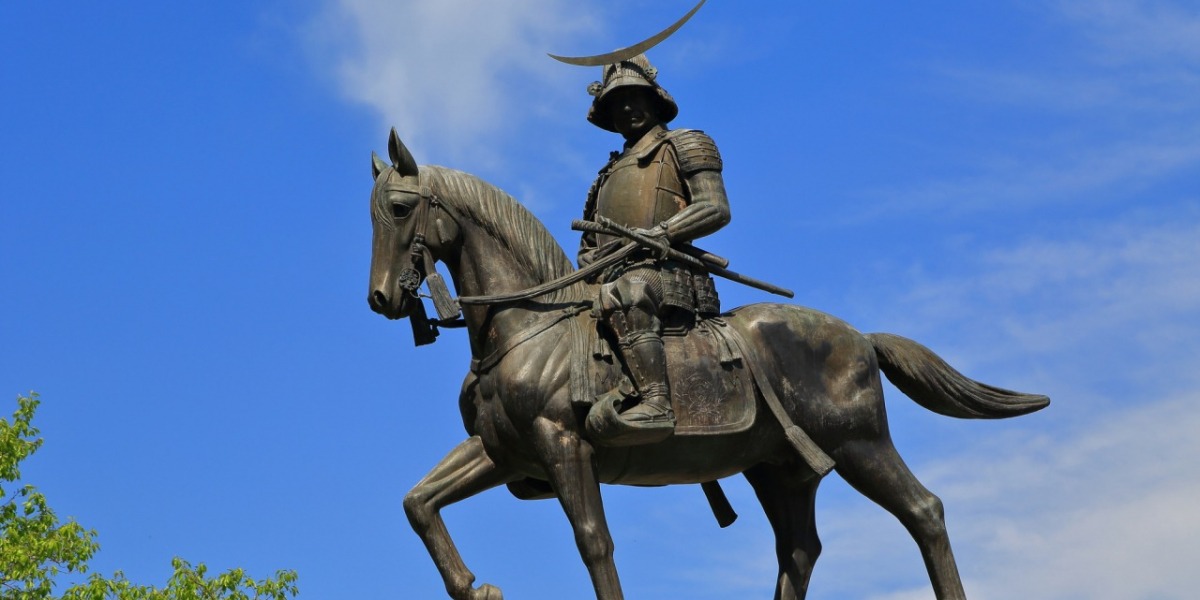
- Suggested Time : 3 days / 2 nights
- Transport Options : Drive
This route focuses on the samurai culture of the Tohoku region. Travel to Aizuwakamatsu, known as the “Samurai City,” and the site of Sendai Castle. Try on samurai armor at Shiroishi Castle, and visit Ouchi-juku, a town that has retained its historical character.
(Koriyama - Aizu - Yonezawa - Shiroishi - Sendai)
START
Day1
Sendai, Fukushima Airport, Koriyama Station
Ouchi-juku
Feel the spirit of the old townspeople of this historic town
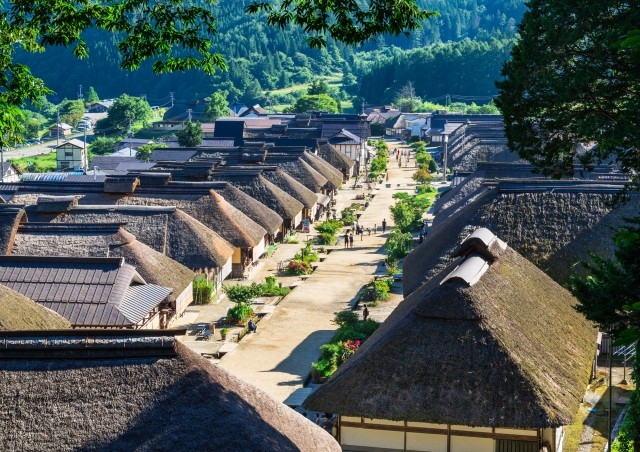
Ouchi-juku is a former post town established around the 17th century and also registered as an Important Preservation District for Groups of Historic Buildings by the Japanese government. The streets lined with thatch-roofed houses are reminiscent of the Edo period (1603-1867), and displays showing the details of life in those times down to the utensils and hearths help visitors imagine what life was like during its heyday.
Continue down the main street where you will reach the Ichi-no-Torii (first gate), of Takakura Shrine, the village's Shinto shrine. Passing through the torii gate, you will find yourself in a quiet walking area. Climb the steps up to the shrine to find a spot with a spectacular view overlooking Ouchi-juku.
There are many souvenir stores and delicious food to eat. Not to be missed is negi soba (leek buckwheat noodles), a local delicacy eaten using sticks of leek as chopsticks. It is not only delicious but also worth a picture! Other attractive foods include tochimochi, a rice cake made by combining horse chestnut and glutinous rice, and shingoro, which looks like a dumpling and is flavored with juunen (perilla) miso.
The area is also close to To no Hetsuri, a scenic gorge designated as a National Natural Monument, making Ouchi-juku a place worth visiting.
Continue down the main street where you will reach the Ichi-no-Torii (first gate), of Takakura Shrine, the village's Shinto shrine. Passing through the torii gate, you will find yourself in a quiet walking area. Climb the steps up to the shrine to find a spot with a spectacular view overlooking Ouchi-juku.
There are many souvenir stores and delicious food to eat. Not to be missed is negi soba (leek buckwheat noodles), a local delicacy eaten using sticks of leek as chopsticks. It is not only delicious but also worth a picture! Other attractive foods include tochimochi, a rice cake made by combining horse chestnut and glutinous rice, and shingoro, which looks like a dumpling and is flavored with juunen (perilla) miso.
The area is also close to To no Hetsuri, a scenic gorge designated as a National Natural Monument, making Ouchi-juku a place worth visiting.
Tsurugajo Castle
Japan’s only castle with elegant red tiled roofs
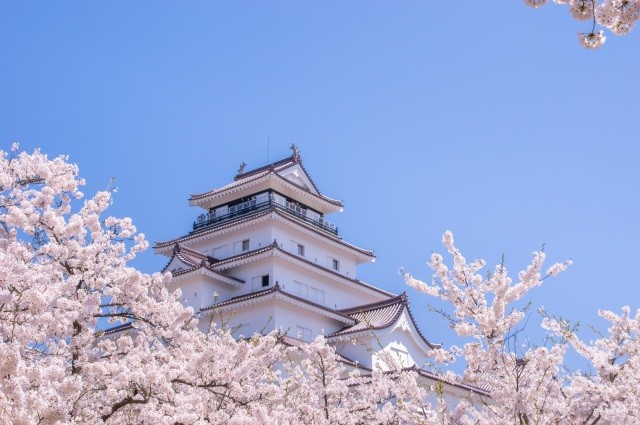
Tsuruga Castle, also known as Aizu Castle or Aizuwakamatsu Castle, is famed as an impregnable fortress that withstood a month-long siege by the newly formed government during the Boshin war in 1868.
The castle has undergone additional repairs since being reconstructed in 1965. Reroofing work was completed in 2011 to reproduce the look of the 17th century castle. Selected as one of Japan’s most famous 100 castles, it is the only existing castle with red tiled roofs in Japan. The stone walls of the castle tower survived the devastating 1611 earthquake and today stand in their original form.
The castle keep is now open as a museum and visitors can enjoy a panoramic view of the city of Aizuwakamatsu from the top floor. After exploring the castle, the tearoom “Rinkaku” in the Tsuruga Castle Park, built by the tea master Sen no Rikyu’s son-in-law, is the perfect place to enjoy a cup of tea in the castle’s traditional garden.
Tsuruga Castle Park is famous for its thousand cherry blossom trees illuminated at night. The surrounding trees are also illuminated in autumn to show off the vividly changing colours of their leaves. Meanwhile the castle fills with visitors during the “Aizue Candle Festival” each winter. The view of the snow-covered castle illuminated by traditional hand-decorated candles is unforgettable!
A thematic journey in the Tohoku region:Castles・Samurai
The castle has undergone additional repairs since being reconstructed in 1965. Reroofing work was completed in 2011 to reproduce the look of the 17th century castle. Selected as one of Japan’s most famous 100 castles, it is the only existing castle with red tiled roofs in Japan. The stone walls of the castle tower survived the devastating 1611 earthquake and today stand in their original form.
The castle keep is now open as a museum and visitors can enjoy a panoramic view of the city of Aizuwakamatsu from the top floor. After exploring the castle, the tearoom “Rinkaku” in the Tsuruga Castle Park, built by the tea master Sen no Rikyu’s son-in-law, is the perfect place to enjoy a cup of tea in the castle’s traditional garden.
Tsuruga Castle Park is famous for its thousand cherry blossom trees illuminated at night. The surrounding trees are also illuminated in autumn to show off the vividly changing colours of their leaves. Meanwhile the castle fills with visitors during the “Aizue Candle Festival” each winter. The view of the snow-covered castle illuminated by traditional hand-decorated candles is unforgettable!
A thematic journey in the Tohoku region:Castles・Samurai
Sazaedo
Experience the wonderland of this double-helix wooden structure – the only one of its kind!
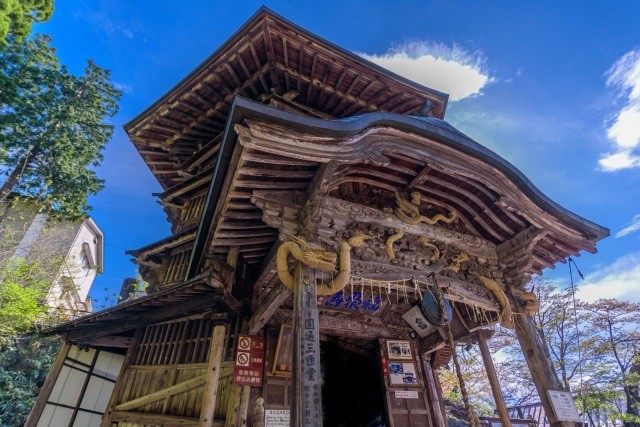
Sazae-do is a three-storied, hexagonal pagoda with the look of an optical illusion. Officially called “Entsu Sansodo”, the temple is known by the nickname “Sazae-do” as its shape resembles a turban shell. The double-helix wooden structure is the only one of its kind in the world and has been designated an Important Cultural Property.
Go inside and walk up the winding slope while observing the curved windows. Thanks to its one-way path you never have to pass anyone on your way up or down. Rumours abound about the construction of this unique structure. According to one Sazae-do was based on the design of Leonard da Vinci’s Chateau de Chambord. Another says the temple’s head priest was inspired by a revelation from heaven. Experience the wonder of the one-way spiral path within this strangely distorted interior space!
Sazae-do was once part of a pilgrimage trail with 33 Kannon statues lining the slope up to the structure. Pilgrims came here as an alternative to the Saigoku Kannon Pilgrimage and today the ceiling of Sazae-do is still covered with stickers from people who accomplished the pilgrimage here.
The building is part of a shrine complex at the base of Mount Iimori. The “Uga Shindo”, 19 statues worshipping the famous Byakkotai (a group of young samurai), is located nearby.
Go inside and walk up the winding slope while observing the curved windows. Thanks to its one-way path you never have to pass anyone on your way up or down. Rumours abound about the construction of this unique structure. According to one Sazae-do was based on the design of Leonard da Vinci’s Chateau de Chambord. Another says the temple’s head priest was inspired by a revelation from heaven. Experience the wonder of the one-way spiral path within this strangely distorted interior space!
Sazae-do was once part of a pilgrimage trail with 33 Kannon statues lining the slope up to the structure. Pilgrims came here as an alternative to the Saigoku Kannon Pilgrimage and today the ceiling of Sazae-do is still covered with stickers from people who accomplished the pilgrimage here.
The building is part of a shrine complex at the base of Mount Iimori. The “Uga Shindo”, 19 statues worshipping the famous Byakkotai (a group of young samurai), is located nearby.
Higashiyama Onsen
Soak in natural surroundings on the outskirts of the samurai city of Aizuwakamatsu
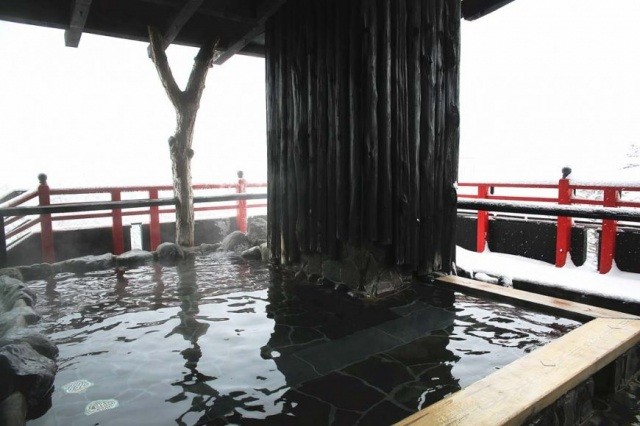
Higashiyama Onsen is one of three renowned hot springs in Tohoku along with Kaminoyama Onsen and Yunohama Onsen in Yamagata. A 10-minute drive from the centre of Aizuwakamatsu, Higashiyama Onsen is situated amid a rich natural scenery of spring cherry blossoms, lush summer greenery, autumn leaves and snowy winter scenes. This Onsen town stirs nostalgic feelings thanks to its row of traditional inns along the river, a traditional shooting range and small waterfall.
Founded by the prominent Buddhist priest Gyoki in the eighth century, Higashiyama Onsen’s sulphate-infused spring water is smooth on the skin and is said to be beneficial for rheumatism, high blood pressure and skin diseases. The high-temperature hot water keeps you warm on the inside. The Onsen was beloved by writers and artists including Akiko Yosano and Yumeji Takehisa. During the Boshin War in 1868, Toshizo Hijikata, a member of the Shinsengumi came here to heal his wounds.
Close to popular attractions such as Tsuruga Castle and Aizu Bukeyashiki, Higashiyama Onsen is a perfect location to start your journey around the samurai city of Aizuwakamatsu.
A thematic journey in the Tohoku region:Hot springs
Founded by the prominent Buddhist priest Gyoki in the eighth century, Higashiyama Onsen’s sulphate-infused spring water is smooth on the skin and is said to be beneficial for rheumatism, high blood pressure and skin diseases. The high-temperature hot water keeps you warm on the inside. The Onsen was beloved by writers and artists including Akiko Yosano and Yumeji Takehisa. During the Boshin War in 1868, Toshizo Hijikata, a member of the Shinsengumi came here to heal his wounds.
Close to popular attractions such as Tsuruga Castle and Aizu Bukeyashiki, Higashiyama Onsen is a perfect location to start your journey around the samurai city of Aizuwakamatsu.
A thematic journey in the Tohoku region:Hot springs
Day2
Kitakata Sake Brewery Exploring Londer Walk
Authentic and exquisite walk rally to visit 12 breweries on foot
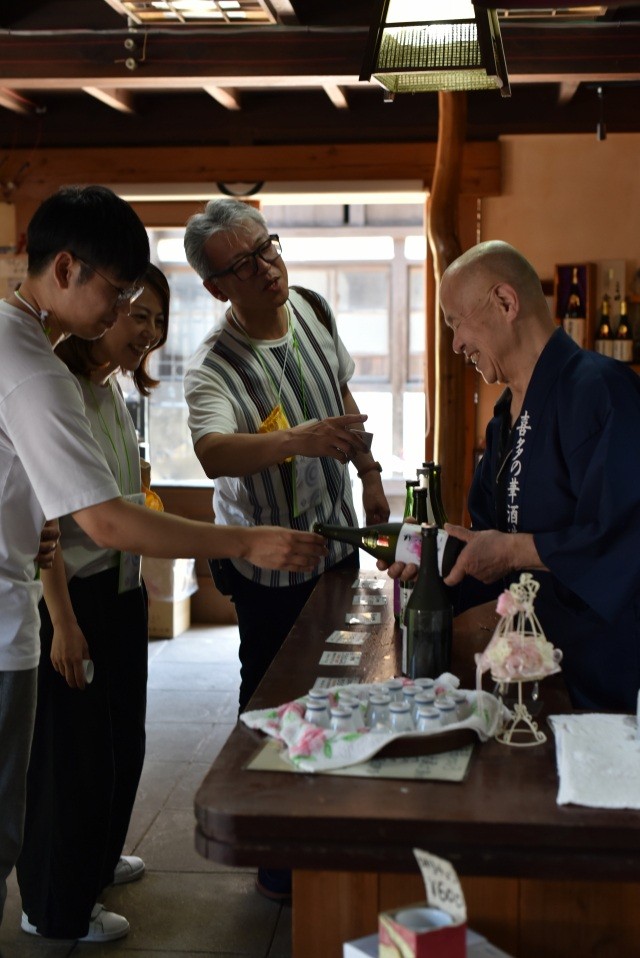
This is a genuine and exquisite walk rally where you can visit sake breweries with an original sake cup in hand and listen to the brewer's explanation while tasting sake and touring the brewery. This is a project that allows strangers to enjoy traditional techniques and fine sake while strolling through Kitakata in its fresh green foliage. Of course, you can finish your meal with Kitakata ramen!
Uesugi Jinja Shrine
Receive some good luck at the shrine of Kenshin Uesugi, one of the most powerful warriors of the civil war period
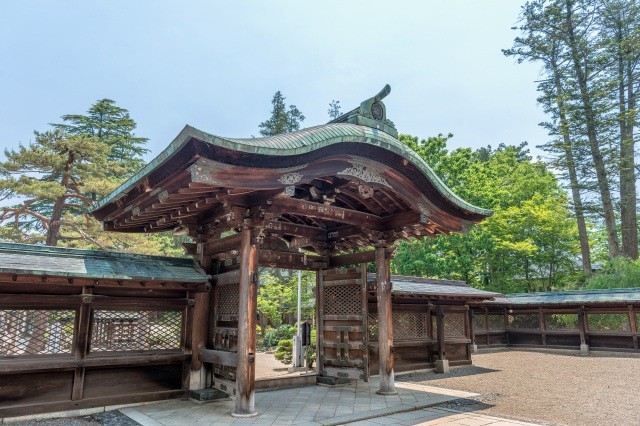
Uesugi Jinja Shrine was built on the grounds of the former Yonezawa Castle to enshrine Kenshin Uesugi, one of the most powerful warriors of the civil wars of the 15th and 16th centuries. The shrine is believed to bring good luck, academic success and thriving business thanks to Kenshin’s lingering spiritual energy.
Along the approach to the shrine, a pair of battle flags each with a Chinese character flies in the breeze on Maizuru Bridge. One has “Bi” for Bishamonten (also known as Vaisravana, the Buddhist guardian of the north) who Kenshin strongly believed in. The other has “Dragon” for Fudo Myo-o (a wrathful deity) that was used as a signal for rushing at the enemy’s position when Kenshin launched an all-out attack. Kenshin‘s firm religious faith led him to take the two most powerful deities of Buddhism to the battlefields.
History lovers should visit the treasure hall Keishoden which exhibits a number of Important Cultural Properties including relics of the Uesugi clan. There is a famous helmet of Kanetsugu Naoe, a renowned warrior and scholar, marked with the Chinese character for “Love” on display.
The shrine is located in Matsugasaki Park, a popular scenic location when the 200 cherry blossom trees lining the park moats are in bloom from mid to late April. The Yonezawa Uesugi Festival takes place at the shrine and the surrounding area from 29 April to 3 May each year. The festival’s highlights include a procession of over 1,000 shrine-parishioners dressed in extravagant samurai costumes carrying portable shrines known as Uesugi Gyoretsu, and a performance of the Battle of Kawanakajima, the biggest battle of Japan’s civil war era. The Uesugi Snow Lantern Festival takes place at the shrine and Matsugasaki Park on the weekend of the second Saturday of February each year. Over 300 candle-lit snow lanterns and 1,000 snow lamps transform the park into a winter wonderland!
The nearby Matsugasaki Shrine of Yozan Uesugi, known for the saying “where there is a will, there is a way”, also belongs to Uesugi Shrine. Visit both of the shrines for a double dose of luck!
Along the approach to the shrine, a pair of battle flags each with a Chinese character flies in the breeze on Maizuru Bridge. One has “Bi” for Bishamonten (also known as Vaisravana, the Buddhist guardian of the north) who Kenshin strongly believed in. The other has “Dragon” for Fudo Myo-o (a wrathful deity) that was used as a signal for rushing at the enemy’s position when Kenshin launched an all-out attack. Kenshin‘s firm religious faith led him to take the two most powerful deities of Buddhism to the battlefields.
History lovers should visit the treasure hall Keishoden which exhibits a number of Important Cultural Properties including relics of the Uesugi clan. There is a famous helmet of Kanetsugu Naoe, a renowned warrior and scholar, marked with the Chinese character for “Love” on display.
The shrine is located in Matsugasaki Park, a popular scenic location when the 200 cherry blossom trees lining the park moats are in bloom from mid to late April. The Yonezawa Uesugi Festival takes place at the shrine and the surrounding area from 29 April to 3 May each year. The festival’s highlights include a procession of over 1,000 shrine-parishioners dressed in extravagant samurai costumes carrying portable shrines known as Uesugi Gyoretsu, and a performance of the Battle of Kawanakajima, the biggest battle of Japan’s civil war era. The Uesugi Snow Lantern Festival takes place at the shrine and Matsugasaki Park on the weekend of the second Saturday of February each year. Over 300 candle-lit snow lanterns and 1,000 snow lamps transform the park into a winter wonderland!
The nearby Matsugasaki Shrine of Yozan Uesugi, known for the saying “where there is a will, there is a way”, also belongs to Uesugi Shrine. Visit both of the shrines for a double dose of luck!
Yonezawa beef from Yamagata
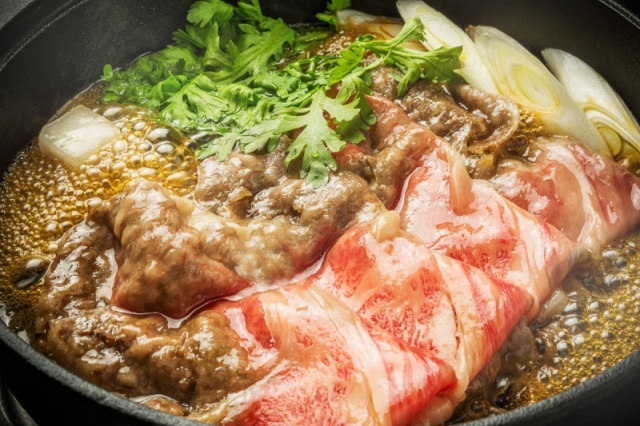
The nationally renowned Yonezawa beef is a breed of cattle raised in the Yonezawa basin. Large temperature differences between the hot and humid summers and cold, harsh winters produce fit cattle with perfectly marbled beef. The cuts and slices of Yonezawa beef feature a melt-in-the-mouth texture and a subtly sweet flavour. Many restaurants in the city of Yonezawa offer unforgettable Yonezawa beef experiences with menu options including steak, Sukiyaki and Shabu-Shabu along with reasonably priced options.
Denkoku-no-Mori Yonezawa City Uesugi Museum
A museum that exhibits valuable articles relating to the Uesugi Clan
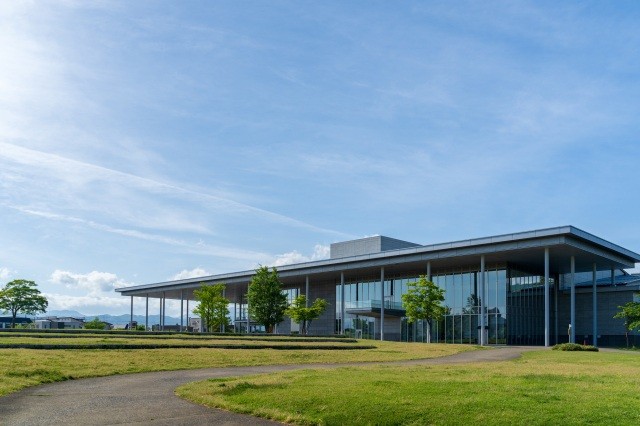
The Denkoku-no-Mori Yonezawa City Uesugi Museum is a museum adjacent to Matsugasaki Park which is also the site of the honmaru (inner citadel) of Yonezawa Castle. It holds valuable articles relating to the Uesugi Clan that flourished as warriors.
The highlight of the museum is without doubt the Uesugi Rakuchu Rakugai Zubyobu (Folding Screen) national treasure. It is said that this folding screen that depicts everyday life in Kyoto was sent by Oda Nobunaga to Uesugi Kenshin. It depicts approximately 2,500 people regardless of their social status. Furthermore, you can understand what it was like to be in Kyoto in those days because it also depicts animals, plants, famous places and festivals. Usually, a replica is on display. However, the original is exhibited for a limited time in the spring and fall when a special exhibition is held.
In addition to this, there is an exhibition that looks back at the achievements of Uesugi Yozan - the ninth feudal lord of the Yonezawa Domain who left behind the wise saying of, ""Everything that can be done must be done."" You can learn about the history of the Uesugi Clan and the culture of Yonezawa. There is a museum shop that sells original goods of Uesugi Kenshin, Uesugi Yozan and Naoe Kanetsugu. There are also items you can only purchase here.
The adjacent Matsugasaki Park is home to Uesugi Shrine where Uesugi Kenshin is enshrined and many monuments relating to the Uesugi Clan (e.g., a bronze statue of Uesugi Yozan). Please make sure to stop by when exploring the park.
A thematic journey in the Tohoku region:Art galleries・Museums
The highlight of the museum is without doubt the Uesugi Rakuchu Rakugai Zubyobu (Folding Screen) national treasure. It is said that this folding screen that depicts everyday life in Kyoto was sent by Oda Nobunaga to Uesugi Kenshin. It depicts approximately 2,500 people regardless of their social status. Furthermore, you can understand what it was like to be in Kyoto in those days because it also depicts animals, plants, famous places and festivals. Usually, a replica is on display. However, the original is exhibited for a limited time in the spring and fall when a special exhibition is held.
In addition to this, there is an exhibition that looks back at the achievements of Uesugi Yozan - the ninth feudal lord of the Yonezawa Domain who left behind the wise saying of, ""Everything that can be done must be done."" You can learn about the history of the Uesugi Clan and the culture of Yonezawa. There is a museum shop that sells original goods of Uesugi Kenshin, Uesugi Yozan and Naoe Kanetsugu. There are also items you can only purchase here.
The adjacent Matsugasaki Park is home to Uesugi Shrine where Uesugi Kenshin is enshrined and many monuments relating to the Uesugi Clan (e.g., a bronze statue of Uesugi Yozan). Please make sure to stop by when exploring the park.
A thematic journey in the Tohoku region:Art galleries・Museums
[Kaminoyama Onsen] Kaminoyama Castle Local Museum
Kaminoyama Castle was once known as the "Famous Castle of Hashu. Today, it is a bustling museum of local history.
![[Kaminoyama Onsen] Kaminoyama Castle Local Museum](/lsc/upfile/spot/0100/3392/1003392_1_m.jpg)
Kaminoyama Castle (also known as Tsukioka Castle) is said to have been built by Takei (Ei) Yoshitada in 1535 at Tenjinmori, Tsukioka.
During the Warring States period, it was the southernmost fortress of the Mogami clan and was the scene of battles with the Date and Uesugi clans in Yonezawa.
During the Edo period (1603-1867), the castle became the residence of successive lords of the Mogami clan, but it was under the Toki clan's rule that the castle, including the castle town, was developed, and the magnificent fortifications of the time were known as the "famous castle of Hashu.
However, the castle was demolished by order of the shogunate in 1692 (Genroku 5) when the Toki clan was transferred to another domain, and today only part of the moat remains.
The present Kaminoyama Castle was rebuilt in 1982 for the first time in 290 years as a local museum with a castle-style exterior.
From the observatory (castle tower), visitors can enjoy a panoramic view of the city and the Zao mountain range.
Volunteer sightseeing guides are available to show you around the museum. Please feel free to ask.
At the Kaminoyama Castle store "Kakashi Jaya", you can purchase original goods and souvenirs of Kaminoyama City.
There is also a "Kaminoyama Castle Footbath" on the premises, which you can freely enter while enjoying the view of the Zao Mountain Range.
During the Warring States period, it was the southernmost fortress of the Mogami clan and was the scene of battles with the Date and Uesugi clans in Yonezawa.
During the Edo period (1603-1867), the castle became the residence of successive lords of the Mogami clan, but it was under the Toki clan's rule that the castle, including the castle town, was developed, and the magnificent fortifications of the time were known as the "famous castle of Hashu.
However, the castle was demolished by order of the shogunate in 1692 (Genroku 5) when the Toki clan was transferred to another domain, and today only part of the moat remains.
The present Kaminoyama Castle was rebuilt in 1982 for the first time in 290 years as a local museum with a castle-style exterior.
From the observatory (castle tower), visitors can enjoy a panoramic view of the city and the Zao mountain range.
Volunteer sightseeing guides are available to show you around the museum. Please feel free to ask.
At the Kaminoyama Castle store "Kakashi Jaya", you can purchase original goods and souvenirs of Kaminoyama City.
There is also a "Kaminoyama Castle Footbath" on the premises, which you can freely enter while enjoying the view of the Zao Mountain Range.
Zao Onsen / Zao Hot Springs
One of the oldest hot springs in Japan, opened 1,900 years ago
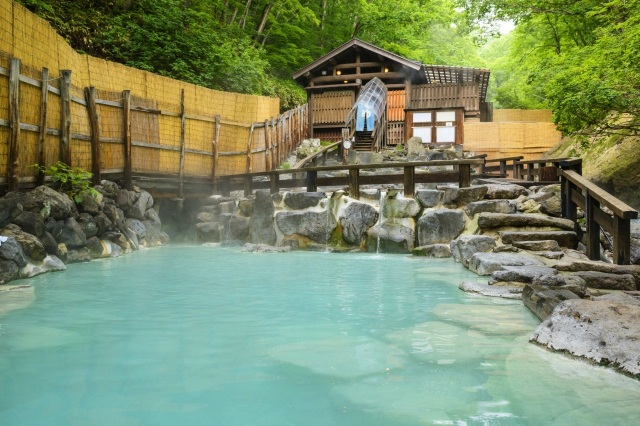
Zao Onsen was first discovered 1,900 years ago by Kibi Tagayu, who served in the army during the Japanese military expedition to the east by the Japanese warrior Takemikoto. In the Edo period (1603-1867), it became a busy western trailhead to Zao Gongen, and already had the appearance of a comprehensive resort. In the Taisho era (1912-1926), a road connecting the villages at the foot of the mountain to the hot springs was opened, and various facilities such as streetlights and a police station were installed, thus establishing a foothold as a tourist destination. In the Showa Period (1926-1989), ski resorts were opened, ropeways were installed, and sightseeing roads were opened, further establishing Zao as a tourist destination. In parallel with these developments, hotels, pensions, and guest houses opened one after another, in addition to the traditional ryokan inns. Zao has developed into one of the largest comprehensive mountain resorts in the Tohoku region.
Day3
Okama Crater of Zao
Zao’s iconic crater-lake changes hues depending on the sunlight
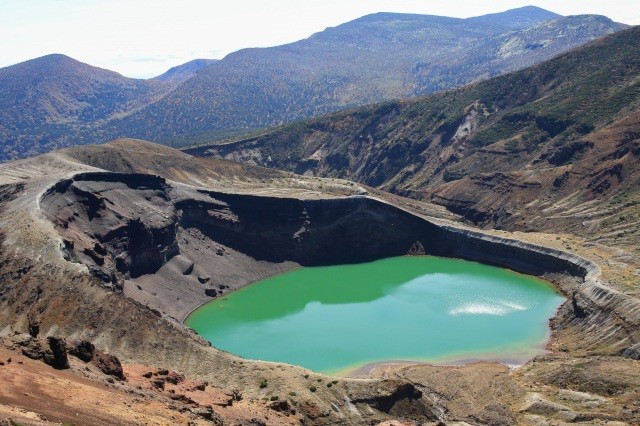
Located on the border of Miyagi and Yamagata prefectures, the Zao Mountain Range has been selected as one of Japan’s 100 most famous mountains. Okama Crater is a crater-lake surrounded by three mountains (Kattadake, Kumanodake and Goshikidake) and, along with its frost-covered trees, is an iconic image of the Zao Mountains. Nicknamed the “Cauldron” because of its appearance, Okama Crater is also known locally as “Goshikilake” (the five-coloured pond) thanks to the changing hues of the water from dark green to blue according to the sunlight. The colours of the crater-lake also fascinate visitors as they change depending on the angle of view. The lake is a kilometre in circumference, 325m in diameter, and has a depth of 27.6m. There is no life in the lake due to strong acidity of the water.
The crater is accessible via a scenic drive along the Zao Echo Line, traversing the Zao Mountains from east to west, to the Zao High Line. The Zao Summit Rest House along the way offers a restaurant and gift shop with a splendid view of Okama Crater. The Zao Echo Line and Zao High Line are open from late April to early November. Please be mindful that these mountain roads are closed during winter.
There is an easy 10-minute trail from Okama Crater to the top of Mount Kattadake (1758m) where the Kattamine Shrine stands worshipping the incarnation of Zao.
The one-hour “Umanose” trekking path leading to Mount Kumanodake offers magnificent views of Okama Crater. Be sure to wear comfortable shoes and suitable clothes.
* The roads and paths around the crater are subject to closure for safety reasons. Please refer to the Japanese Meteorological Agency’s website for the latest warnings.
The crater is accessible via a scenic drive along the Zao Echo Line, traversing the Zao Mountains from east to west, to the Zao High Line. The Zao Summit Rest House along the way offers a restaurant and gift shop with a splendid view of Okama Crater. The Zao Echo Line and Zao High Line are open from late April to early November. Please be mindful that these mountain roads are closed during winter.
There is an easy 10-minute trail from Okama Crater to the top of Mount Kattadake (1758m) where the Kattamine Shrine stands worshipping the incarnation of Zao.
The one-hour “Umanose” trekking path leading to Mount Kumanodake offers magnificent views of Okama Crater. Be sure to wear comfortable shoes and suitable clothes.
* The roads and paths around the crater are subject to closure for safety reasons. Please refer to the Japanese Meteorological Agency’s website for the latest warnings.
Shiroishi Castle Samurai Armor Dressing Experience
Wear samurai armor and helmet replicas at Shiroishi Castle in Shiroishi, Miyagi Prefecture! Create memories with family, friends, and partner!
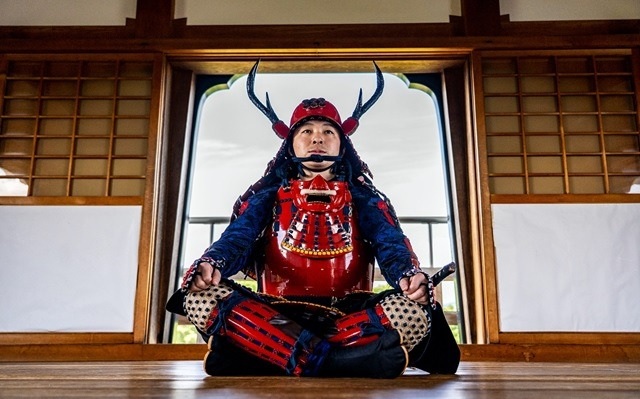
Experience authentic armor at Shiroishi Castle, one of only five restored wooden castles in Japan.Wear heavy armor carefully crafted by armor craftsmen. You can choose from the armor of Date Masamune, Katakura Kojuro, and Sanada Yukimura.Feel the weight and power of history and the extraordinary experience of being a “Warlord of the Warring States” with your whole body.
Sendai Castle ruins
An impregnable and famous castle built on Mt Aoba.
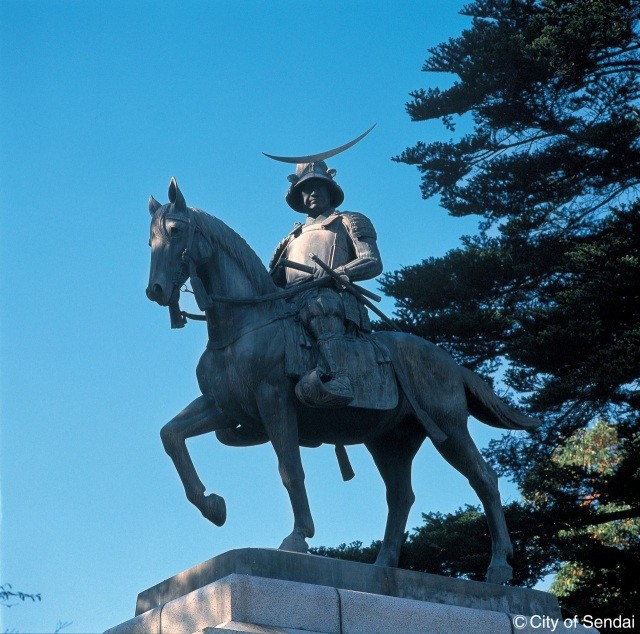
Sendai Castle (Aoba Castle) was the residence of Date 620,000 goku. The castle was built at an elevation of 130 m above sea level, with cliffs to the east and south. It is said that the castle did not have a castle tower to avoid the warnings of Shogun Tokugawa Ieyasu. Unfortunately, the castle is now gone, and the reconstructed side turrets are a reminder of bygone days. If you stand in front of the statue of Masamune Masamune's cavalryman, you can view the city of Sendai from the same vantage point as Masamune, who was ambitious to conquer the whole country.
At the Aoba Castle Museum and Exhibition Hall, visitors can view computer-generated images of a reconstruction of Aoba Castle. In the summer of 2003, Aoba Castle was designated as a National Historic Site.
The area around the ruins of the castle is Aobayama Park, and from the ruins of the castle's main citadel, you can enjoy a panoramic view of Sendai City and the Pacific Ocean. In front of the bronze statue of Bansui Doi, an automatic performance of "The Moon over the Deserted Castle" is played every 30 minutes from 9:00 to 18:00. From the castle tower, visitors can enjoy the night view of Sendai, a city of one million.
At the Aoba Castle Museum and Exhibition Hall, visitors can view computer-generated images of a reconstruction of Aoba Castle. In the summer of 2003, Aoba Castle was designated as a National Historic Site.
The area around the ruins of the castle is Aobayama Park, and from the ruins of the castle's main citadel, you can enjoy a panoramic view of Sendai City and the Pacific Ocean. In front of the bronze statue of Bansui Doi, an automatic performance of "The Moon over the Deserted Castle" is played every 30 minutes from 9:00 to 18:00. From the castle tower, visitors can enjoy the night view of Sendai, a city of one million.
Sendai Domain Ancestor Date Masamunes Mausoleum Zuihoden
The resting place of Date Masamune
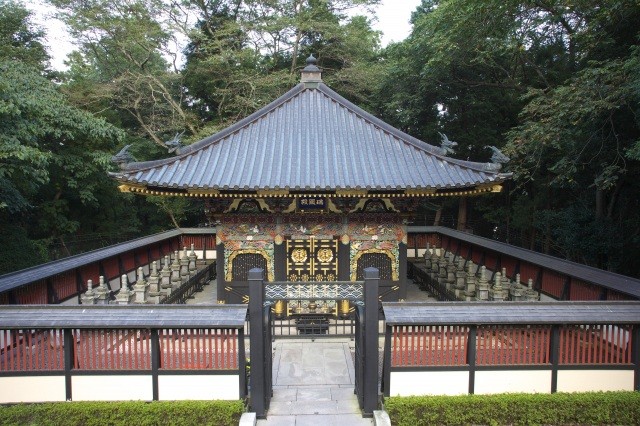
Zuihoden is the mausoleum of Date Masamune, the founder of Sendai and most powerful daimyo (feudal lord) of the Tohoku region. Constructed in 1637 and designated as a National Treasure in 1931, it was destroyed by a fire during the second world war; the present structure was built in 1979 and reconstructed in its original Momoyama architectural style. There is a second and third generation mausoleum on the site, as well as a museum displaying excavation materials.
*Please check the official website for the latest information.
*Please check the official website for the latest information.
Jozenji Street
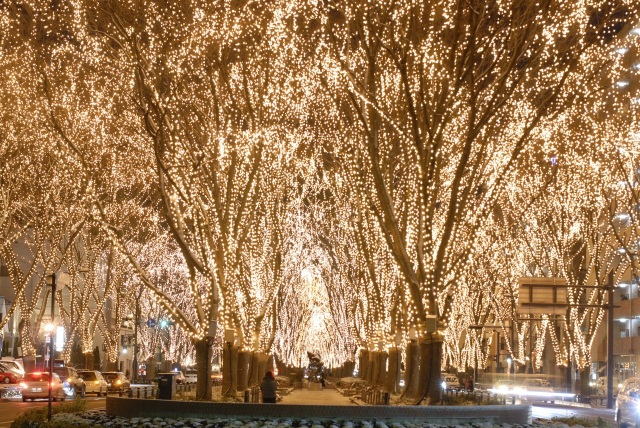
The zelkova trees lining the street create the image of "Mori no Miyako" (the "City of Trees"). In winter, a pageant of light is held.
Sendai Station, Sendai Airport
GOAL
